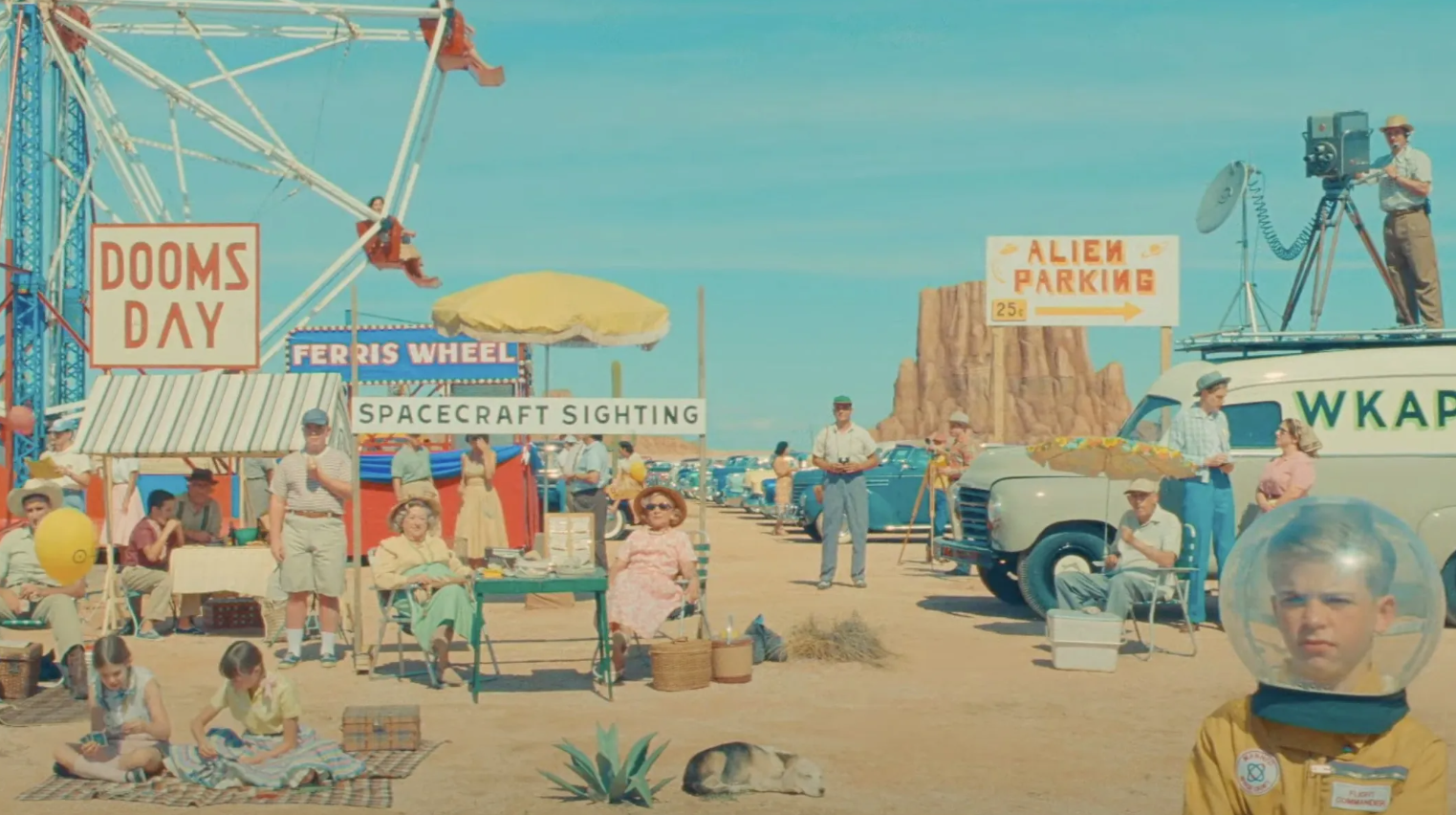THE LATEST WORK OF WES ANDERSON CONTAINS THE DETAILED PRODUCTION DESIGN IN ‘ANDERSON STYLE’ TO CREATE A UTOPIA UNLIKE THE SAD REALITY IN AMERICAN SOCIETY OF THE 1950S
TEXT: NUTTARAT PUNJAWILAIPIBOON
PHOTO COURTESY OF FOCUS FEATURES
(For Thai, press here)
Most moviegoers recognize Wes Anderson as a deadpan-comedy filmmaker. His films are known for their renowned ensemble cast, and well-balanced perspective pastel colored scenes in which a prominent character is at the center of each shot.
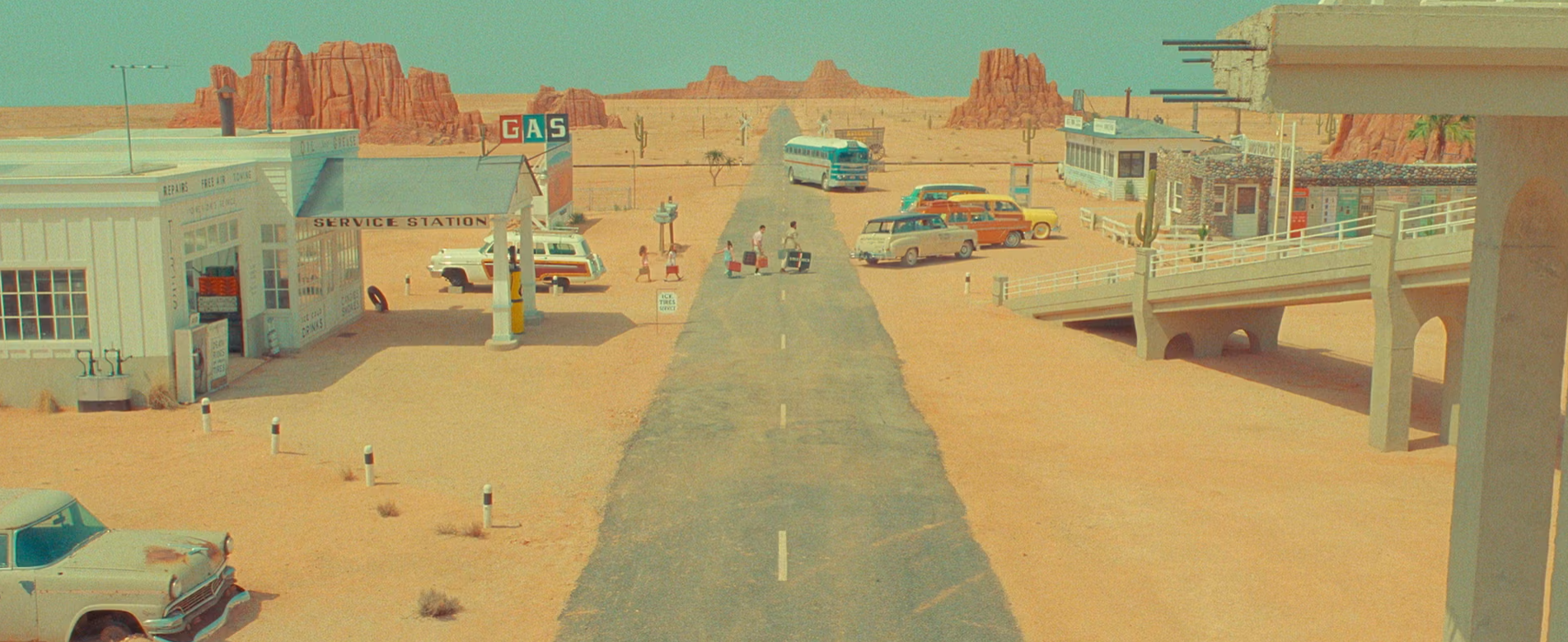
Asteroid City, one of his recent films released in 2023 still retains Anderson’s trademarks that audiences are familiar with in his former works; The Grand Budapest Hotel (2014) and The French Dispatch (2021). According to the film’s premise, it is a 1950s sci-fi film about a deserted city among the deserts of Arizona where a meteorite was found. After that several people visited the area, Thus transforming it to become a tourist landmark akin to the title of the film.
Various professionals end up visiting and settling in Asteroid city. Namely a war photographer Augie Steenbeck (Jason Schwartzman) who tries to cover the events surrounding the meteorite and who is also secretly infatuated with an actress Midge Campbell (Scarlett Johansson). Others include, a teacher June (Maya Hawke) who brings her students there for astronomy education and a group of scientists including US military who came there expecting a potential alien encounter.
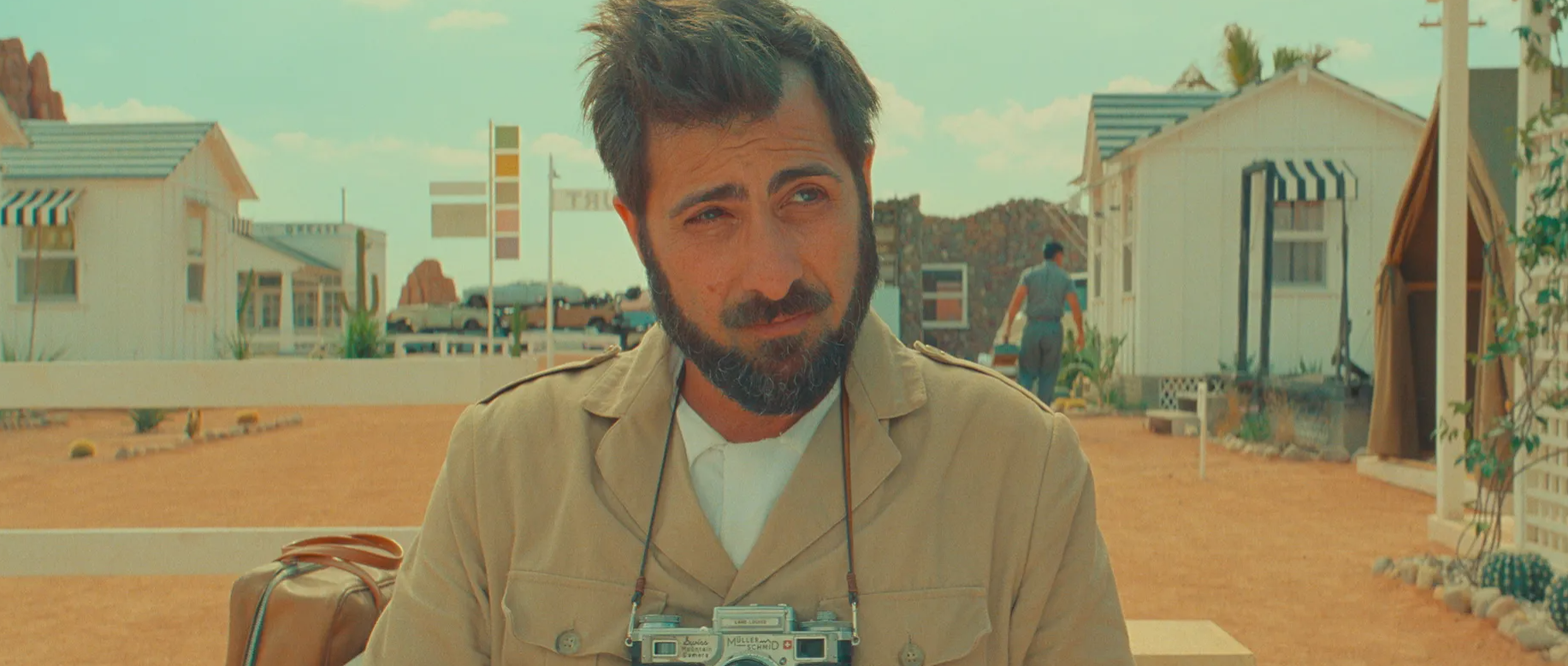
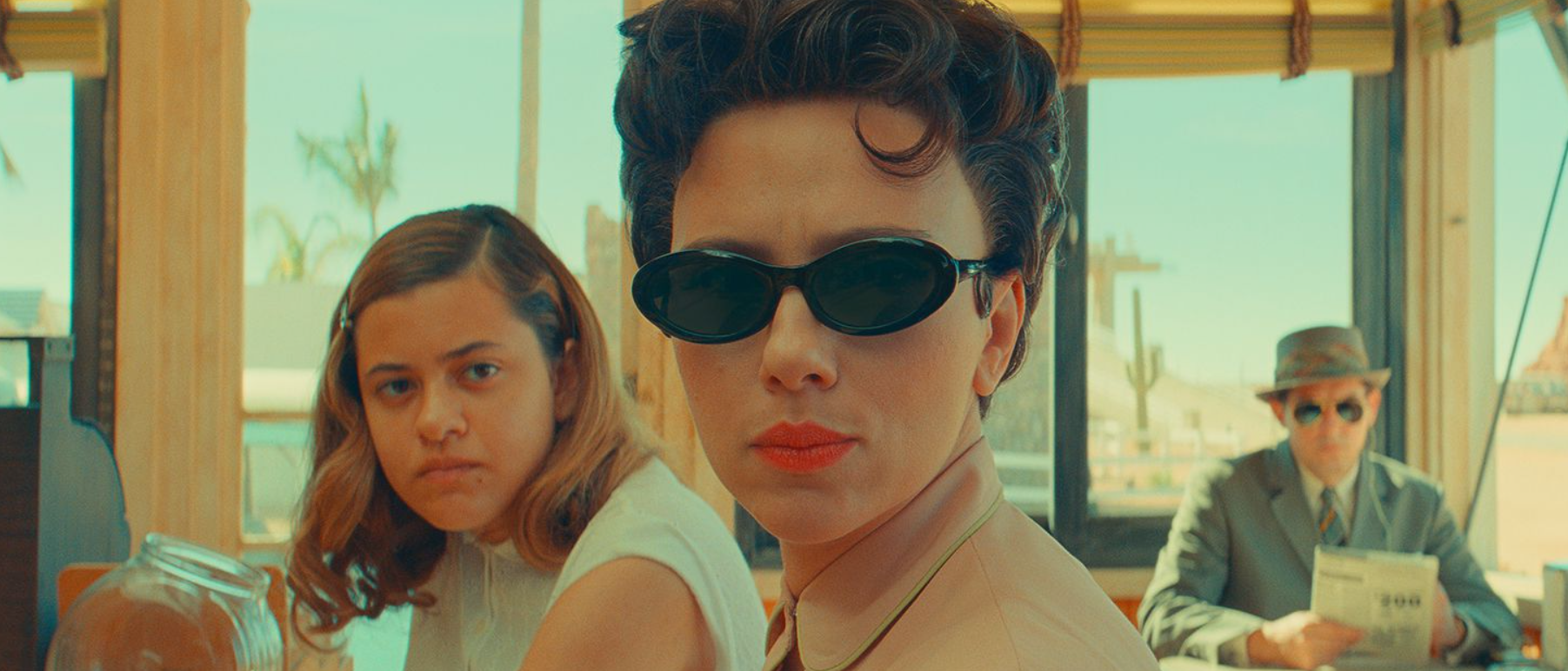
However, the real story of this film is about the hardship of a playwright named Conrad Earp (Edward Norton) who tries to create a stage play of his father (Bryan Cranston) who is also narrating his journey to the city (he was credited as Host). This is about the ambition of a theatrical expert who makes a sci-fi play by duplicating the world of science onto the stage. Thus all the compositions in this film look like the aspects of the theatrical play process. The difference between the story within and the reality is clearly expressed with the shades of colors. While reality was shot in black and white shades, the others were displayed in pastel ones.
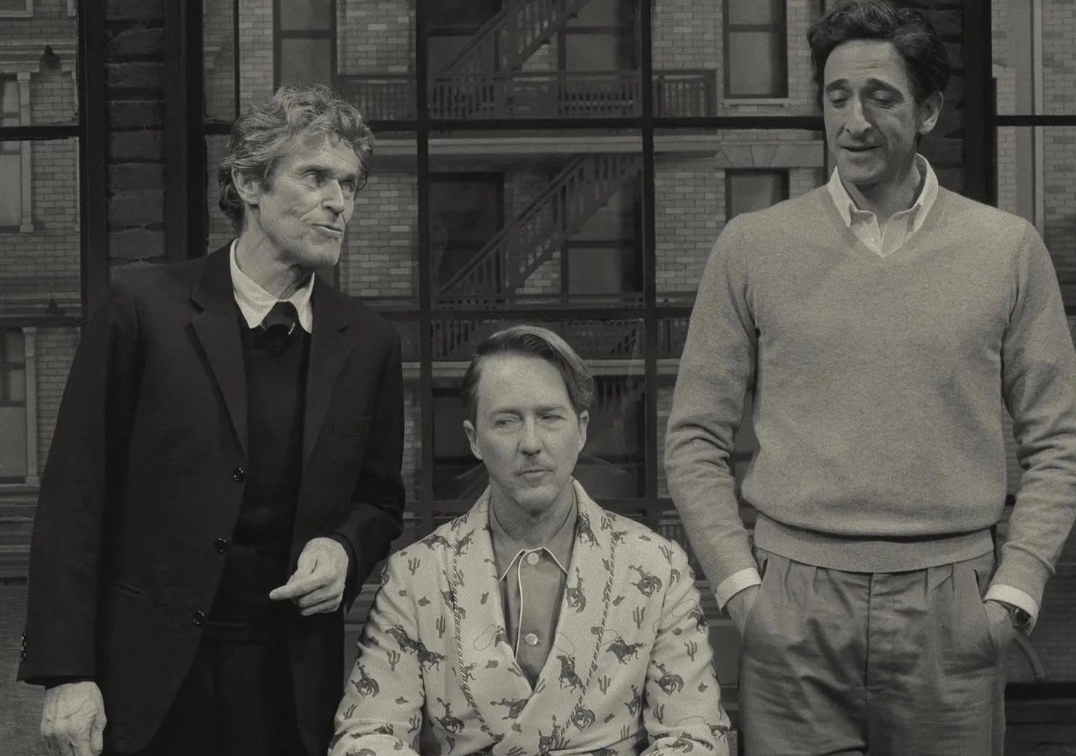

All the scapes in Asteroid City of Conrad Earp’s play look theatrically stylish. The city lacks wild drought. Some rock hills look clearly smooth. There is nobody touching sand or no display of sand’s rough texture. Even that fallen meteorite looks smooth and round like it’s made of something artificial and painted by man. Furthermore, the appearance and movement of an alien looks funny with stop-motion techniques like his former animations ‘Fantastic Mr. Fox (2009)’ and ‘Isle of Dogs (2018)’. Overall, the lifestyle there is quite far from drought hardship unlike how other people feel somewhere among deserts.
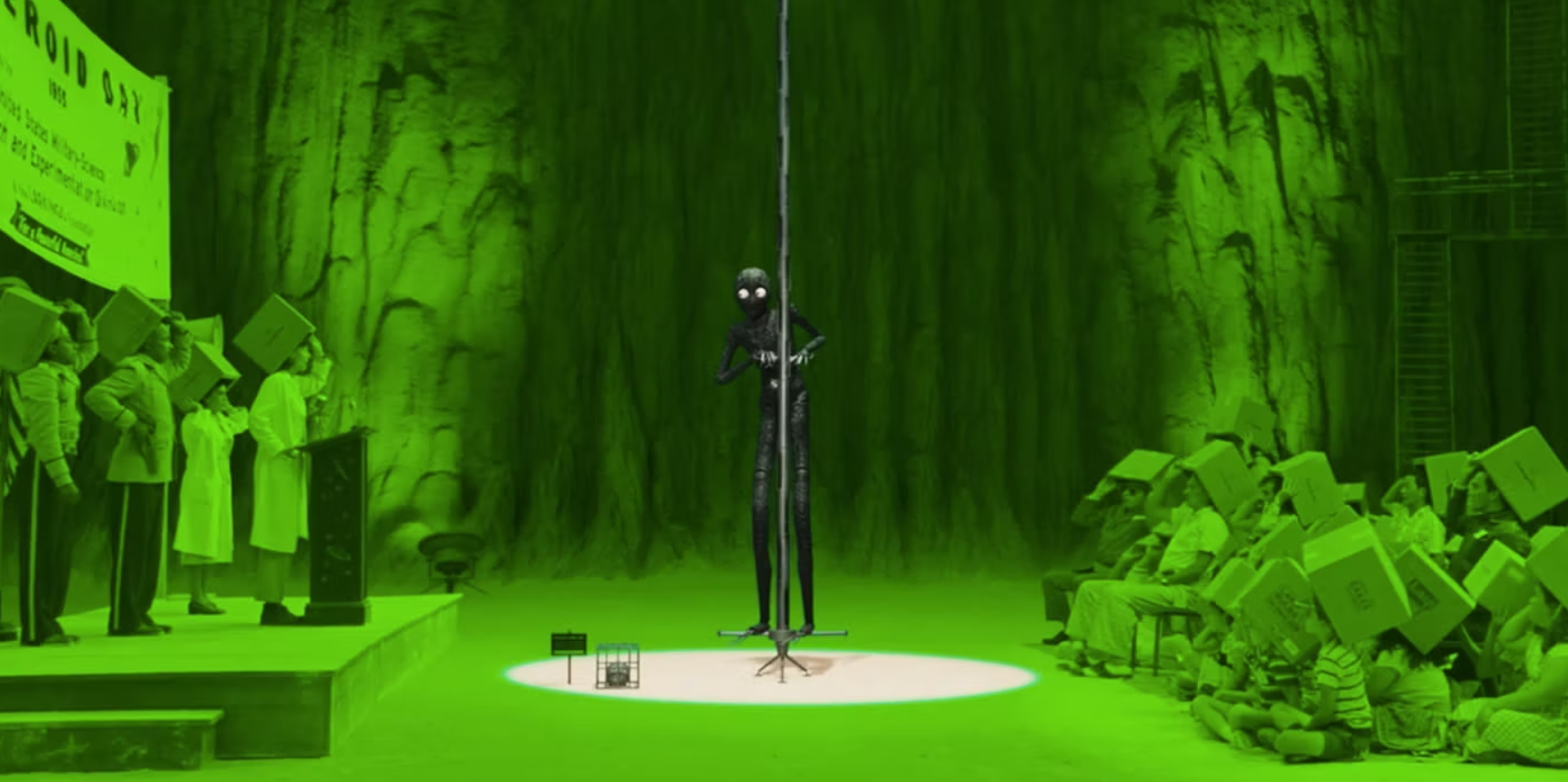
The film also secretly represents being rebellious against American society during the 1950s via both the play and reality behind the stage of Conrad Earp. In the play, an Asian character (a male student) has a prominent role by communicating with the outside while the city was under quarantine even though POC people of America in the 1950s were discriminated against as the minority and were usually represented on media as the wallflowers or laughable characters. Meanwhile in reality, Conrad Earp has an affair with Jones Hall, the actor who plays Augie Steenbeck. It also seemed like Jones used to have an affair with an actress (Margot Robbie) who was the inspiration for Midge Campbell. While Augie’s late wife’s ashes were in a plastic bowl container that was buried in the city of story within. Then Augie reveals a photo of his wife who looks the same as that actress he used to have a relationship with in real life.
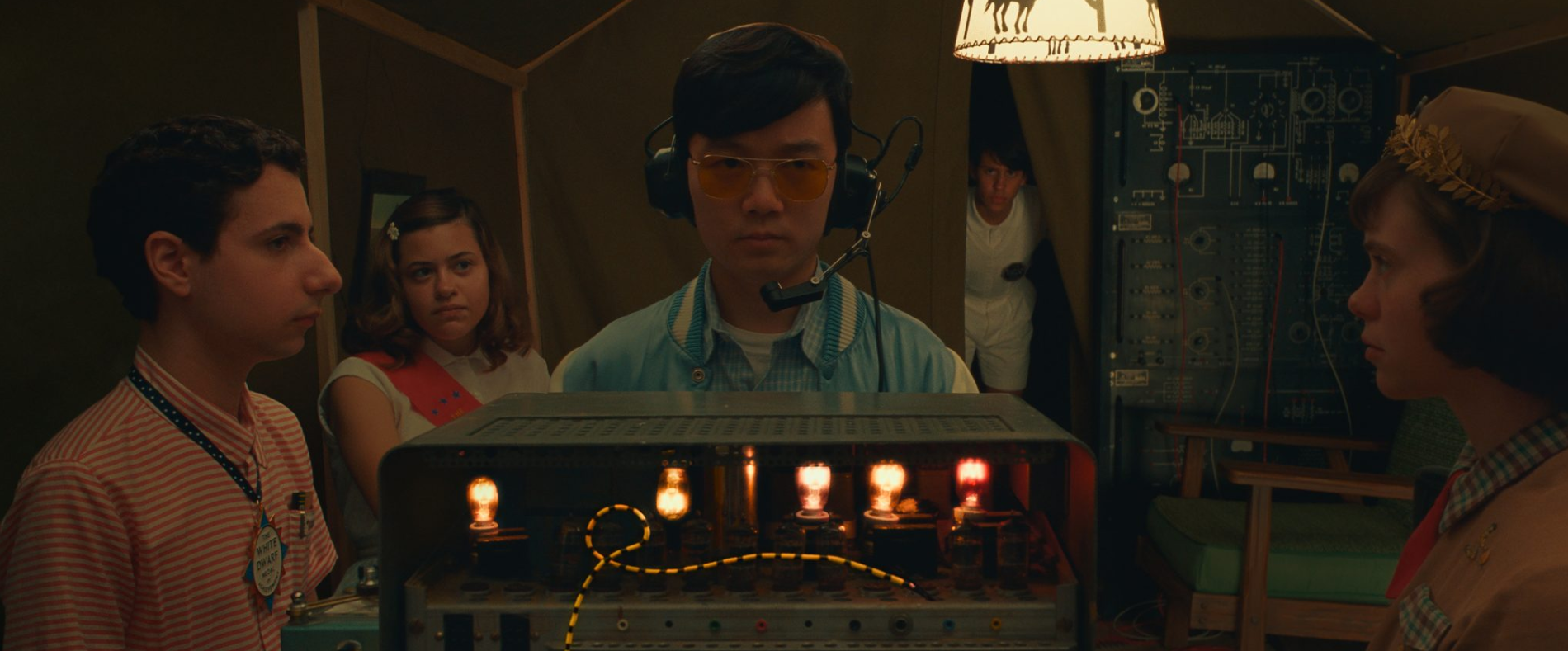
The entire film’s depiction of both the theatrical play and reality behind the stage might be Wes Anderson’s experimental project for creating ‘surreal utopia’ -a world where people have well-being without racism and discrimination against sexual orientation, unlike the disturbing reality in American history.
